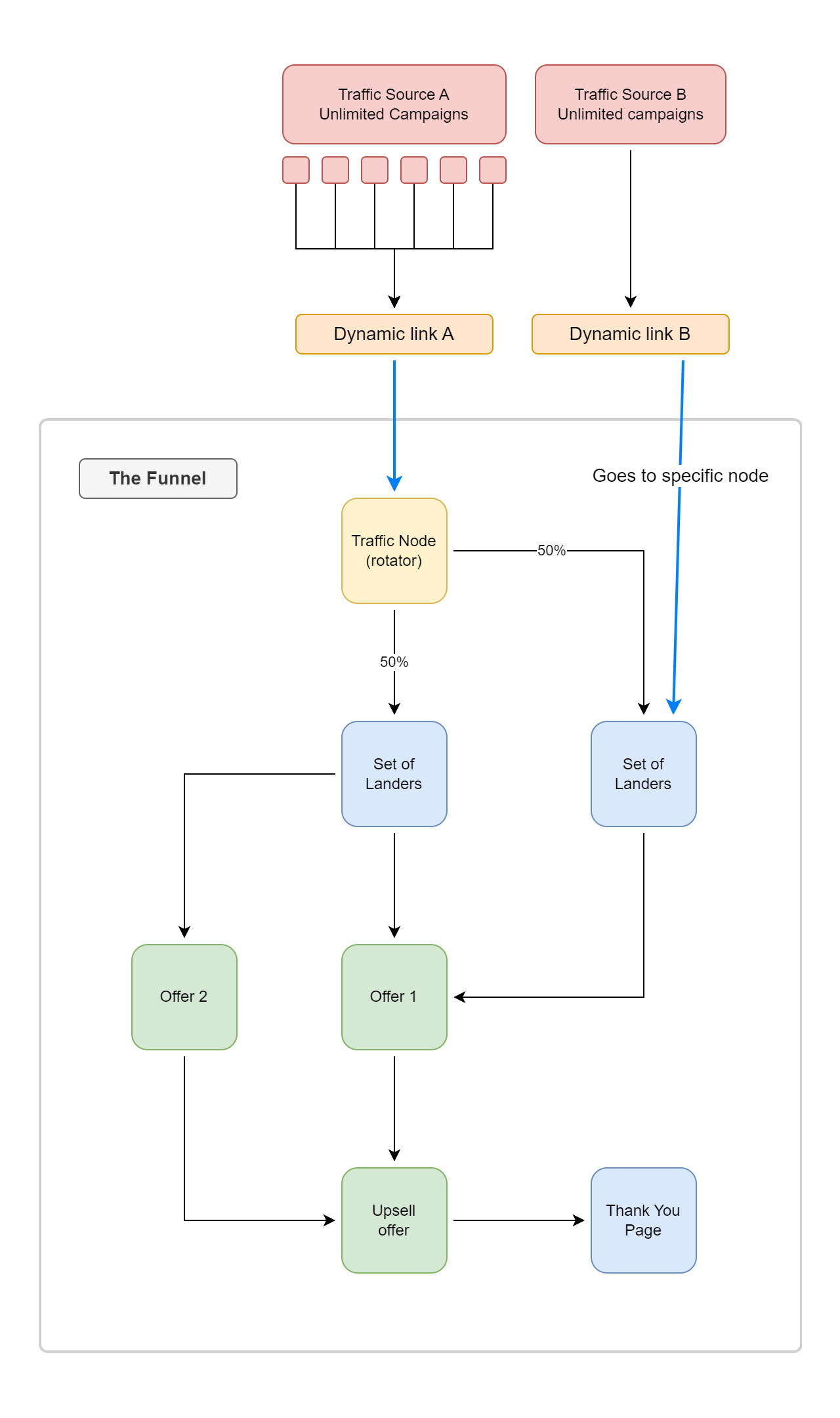Funnels are the core part of FunnelFlux – it's in the name after all.
You will need to build a funnel to run your marketing campaigns.
It's the place where you stitch together your pages into a flow the user will go through, and it's also the place where you will generate the tracking links used in your marketing campaigns.
Using the funnel builder is a different matter, and that's convered here.
In this document we'll cover how funnels conceptually work in FunnelFlux, and how they compare to other tracking platforms you may be migrating from.
How funnels work
If you have used other tracking platforms you may be familiar with the idea of "campaigns", which often have their own unique tracking link that is used at a specific traffic source.
FunnelFlux takes a different approach.
In our system, you can build a funnel, which is like a flow chart, that describes what you want traffic to do.
Where do you want it to go, what pages do you want to serve, where do you want users to go on clicking button 1, 2, 3, and so on.
You do this using our visual builder where you create "nodes" and connections between them. It's just like a flow chart, where our system processes the flow chart as a user navigates, capturing information and making decisions along the way.
Now, unlike "campaigns" in other trackers, in FunnelFlux you can then send traffic from ANY source to your funnel at ANY location in that funnel (i.e. nodes).
In this way, you do not need to recreate or duplicate funnels for the same user journey, and you can dynamically generate links when you need them, never having to save and store unique campaign links anywhere.
To give a comparison, this is what most trackers do:
![]()
In this approach, in the tracker you have a lot of unique campaigns to manage.
Every one of them has a unique link, such as:
https://domain.com/asbc2-kl2rl-lo3pp-13j98-lsd90/?query_stuff
This means a lot of unique links to manage and individual campaigns in the tracker which each have their own attached config or downstream flows.
Often the campaigns are strictly forced to a single traffic source choice, sometimes country, and reporting more globally can be difficult.
FunnelFlux's approach is that a single funnel describes a flow or journey users will take – which is independent of where they came from.
The funnel controls the logic as users move through the different steps/pages.
Within the funnel builder, you can can generate links to send users to anywhere at that funnel, with the link itself dynamically telling the tracker what traffic source the user is coming from, what funnel they are going to, and all other URL parameters.
Put more visually:

While this approach isn't for everyone, it's how we like to approach things in FunnelFlux.
Build a funnel with your assets, click a node and say "I want to send traffic here, from this source". We give you a link and away you go!
With our approach, links look like this:
https://domain.com/funnel-trafficsource/?query_stuff
You don't need to save these links, you can go and get them again at any time. This is a common point of confusion – you do not "save" a traffic source in the funnel and link them in some way.
The links you generate are fully dynamic and include the ID of the funnel and traffic source. You can thus use the same link for every campaign at your traffic source, provided you want the users to go to the same funnel.
That's all for now... now go and build a funnel!


